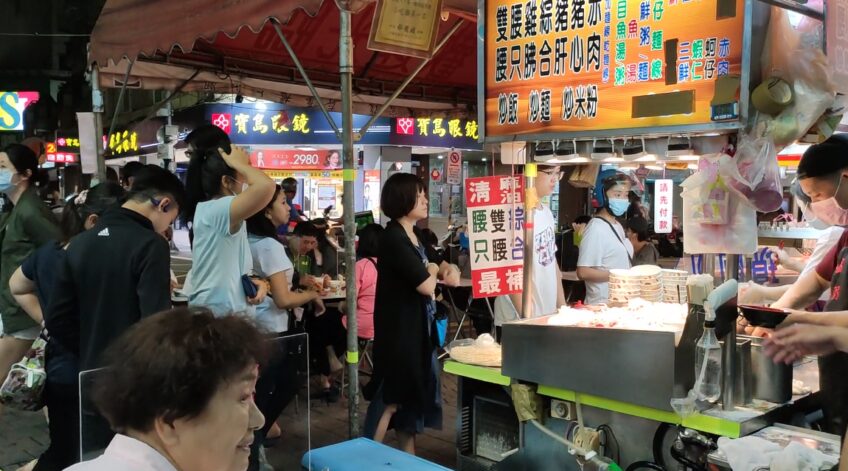Food is the universal language that brings people together from all corners of the world. From exotic spices to classic recipes passed down through generations, every culture has its unique culinary heritage. However, what happens when you’re craving your favorite dish from a foreign land but can’t read or understand the menu? That’s where translation and localization in the food industry come into play.
In this blog post, we’ll explore how these crucial services are revolutionizing the way we experience food and helping us taste the world without ever leaving our hometowns!
Page Contents
- 1 The Multicultural Palate: Understanding Global Food Preferences
- 2 Translating Menus: The Art of Communicating Food Choices
- 3 Localization Challenges: Adapting Food Products for Different Markets
- 4 Culinary Traditions: Preserving Cultural Identity through Translation
- 5 Transcreation: Capturing the Essence of Food in Different Languages
- 6 Overcoming Language Barriers: Improving Customer Experience in Restaurants
- 7 Packaging and Labeling: Translating Essential Information for Consumers
- 8 Translating Recipes: Sharing Culinary Delights across Borders
- 9 Marketing and Advertising: Tailoring Food Campaigns to Local Tastes
- 10 Local Sourcing: Translating Supply Chain Processes for Authenticity
- 11 Technology and Innovation: Advancements in Translation and Localization for the Food Industry
- 12 Conclusion
The Multicultural Palate: Understanding Global Food Preferences
Food preferences vary greatly from one culture to another. What may be considered a delicacy in one country could be completely unfamiliar or even unappetizing in another. Understanding these cultural differences is vital for any food business looking to expand internationally. translation and localization on loc.centus.com experts help bridge this gap by providing insights into global food preferences, enabling businesses to tailor their offerings to specific target markets.
Translating Menus: The Art of Communicating Food Choices

When dining out, menus serve as a crucial point of interaction between customers and restaurants. Translating menus accurately is essential to ensure that customers can understand and choose their desired dishes. It involves more than simply converting words from one language to another; it requires careful consideration of cultural nuances, local ingredients, and culinary traditions. Effective menu translation helps create a seamless dining experience that respects the authenticity of the cuisine while catering to the preferences and expectations of local customers.
Localization Challenges: Adapting Food Products for Different Markets
Adapting food products for different markets involves more than just translating packaging labels. It requires a deep understanding of local tastes, dietary preferences, and regulations. Localization ensures that food products meet the expectations and standards of the target market, taking into account factors such as ingredients, portion sizes, and nutritional information. This process enables companies to navigate diverse markets successfully and establish a loyal customer base.
Culinary Traditions: Preserving Cultural Identity through Translation
Food is not only about nourishment but also a reflection of cultural identity and heritage. Through translation and localization, culinary traditions can be preserved and shared with a global audience. Translators and localizers work diligently to accurately convey the essence of traditional recipes, cooking techniques, and cultural significance, allowing people from different backgrounds to appreciate and embrace the richness of diverse culinary heritages.
Transcreation: Capturing the Essence of Food in Different Languages
Transcreation goes beyond traditional translation. It involves adapting the content while maintaining its original intent and emotional impact. In the food industry, transcreation is particularly important when it comes to slogans, advertising campaigns, and brand messaging. The aim is to evoke the same emotions and desires in different cultures, even if the specific words or phrases used may differ. Transcreation ensures that the essence of a brand’s message resonates with customers across linguistic boundaries.
Overcoming Language Barriers: Improving Customer Experience in Restaurants
Language barriers can often lead to miscommunication and frustration for customers dining in foreign countries. By providing translated menus, signage, and staff training in multiple languages, restaurants can enhance the customer experience and make guests feel more comfortable. Multilingual staff members or interpreters can facilitate communication between customers and the restaurant staff, ensuring that dietary restrictions, allergies, and personal preferences are understood and respected.
Packaging and Labeling: Translating Essential Information for Consumers
Clear and accurate packaging and labeling are crucial for consumer safety and satisfaction. Translating important information, such as ingredient lists, allergen warnings, and nutritional facts, helps consumers make informed decisions about the food they purchase and consume. Localization of packaging also takes into account cultural sensitivities and legal requirements, ensuring compliance with local regulations.
In addition, localization of packaging and labeling not only considers cultural sensitivities and legal requirements but also addresses the unique preferences and dietary restrictions of specific regions. By providing clear and accurate translations of crucial information, companies prioritize consumer safety and satisfaction, empowering individuals to navigate the global marketplace with confidence and make informed choices about the food products they select for themselves and their families.
Translating Recipes: Sharing Culinary Delights across Borders

Recipes are the heart and soul of any cuisine. Translating recipes allows people from different cultures to recreate and savor authentic dishes. However, translating recipes involves more than just converting measurements and ingredients; it requires an understanding of cooking techniques, regional variations, and cultural context. Skilled translators ensure that the steps and flavors are accurately conveyed, allowing individuals to explore and enjoy the diverse culinary world.
Marketing and Advertising: Tailoring Food Campaigns to Local Tastes
Effective marketing and advertising campaigns resonate with their target audience. Translating and localizing food campaigns ensures that they appeal to local tastes and preferences. This involves adapting slogans, taglines, and imagery to evoke the desired emotions and associations in different cultures. Localization experts understand the cultural nuances and sensitivities that shape consumer behavior, enabling companies to create impactful marketing strategies that drive engagement and sales.
Local Sourcing: Translating Supply Chain Processes for Authenticity
The farm-to-table movement and the increasing emphasis on sustainability have led to a rise in local sourcing and artisanal food production. Translating supply chain processes, certifications, and quality standards helps maintain the authenticity and transparency of locally sourced food products. By effectively communicating the origin and production methods, businesses can build trust with consumers, who value knowing where their food comes from and how it is produced.
Technology and Innovation: Advancements in Translation and Localization for the Food Industry

Technology has revolutionized the translation and localization industry, offering innovative solutions for the food sector. Machine translation, natural language processing, and artificial intelligence tools are being employed to streamline processes, increase efficiency, and ensure consistency in translations. These advancements, combined with human expertise, enable businesses to reach wider audiences, reduce costs, and deliver high-quality localized content.
Conclusion
Translation and localization are indispensable in the modern food industry. They facilitate cultural exchange, foster culinary appreciation, and bridge the gap between diverse communities. By understanding global food preferences, adapting to local markets, and preserving cultural identities, businesses can expand their reach and thrive in the international food landscape. Embracing the power of translation and localization allows us all to truly taste the world and experience the rich tapestry of flavors it has to offer.
With an in-depth knowledge of supplements and a commitment to wellness, Sharon’s words inspire readers to embark on a transformative journey towards optimal health.
Also Read:
- 7 Benefits of Homemade Baby Food - Tiny Taste Explorers
- Exploring the World's Most Iconic Traditional…
- Technology in Healthcare Industry: From Telemedicine to AI
- Activated Charcoal for Food Poisoning: Benefits and…
- The Role of Cashews in Managing Healthy Blood Sugar…
- Learn New Food Recipes by Watching these Cooking…















